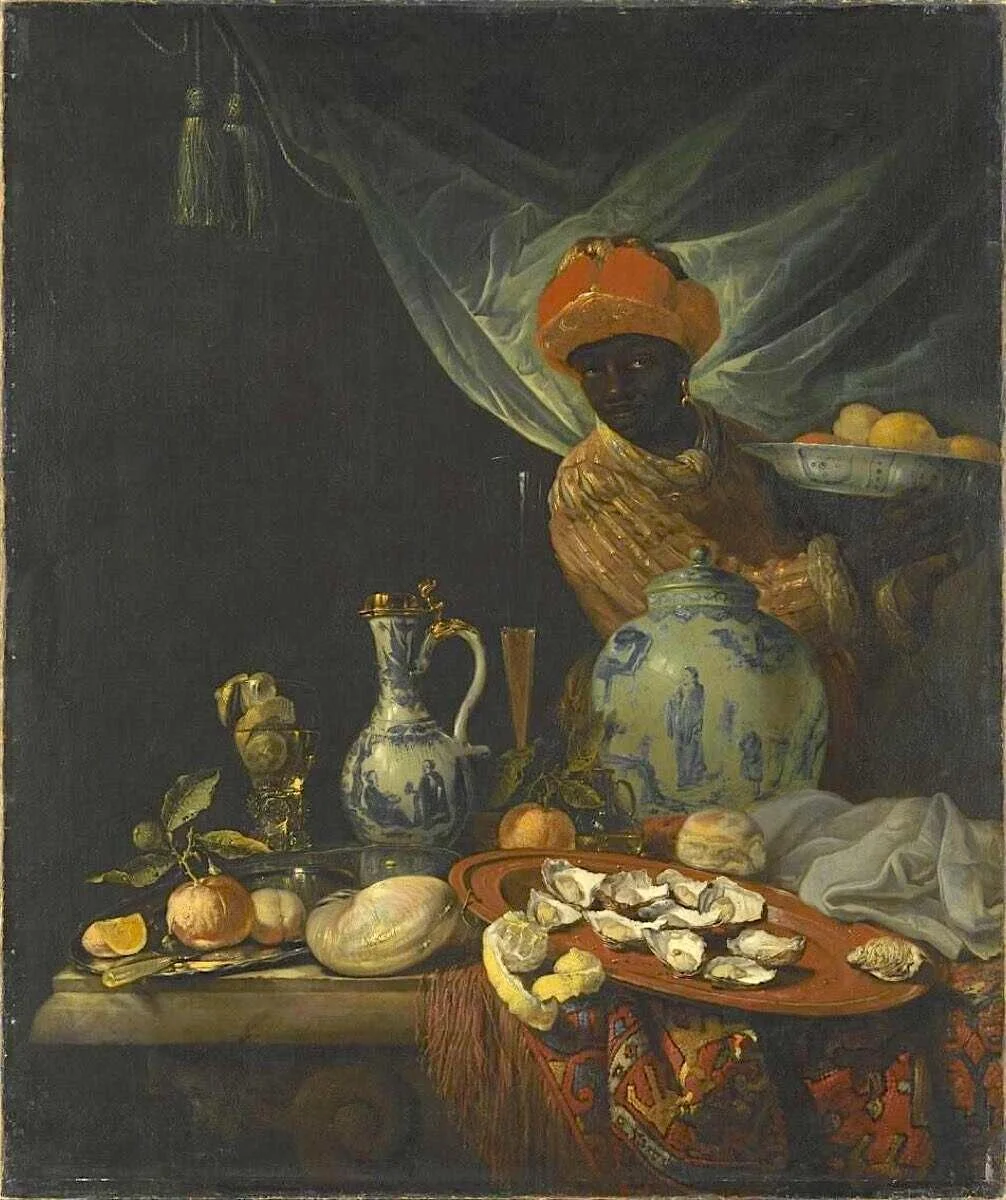Dutch Still Lives And The Food We Buy
Jan Davidsz de Heem, Detail of Still Life with Ham, Lobster and Fruit, c. 1653, oil on canvas, 75 x105 cm, Museum Boljmans Van Beuningen, Rotterdam (Image: Wikipedia)
The Louvre has recently announced a new exhibition next year (opening in October 2022) which will be dedicated to the history of still lives, from Antiquity through to the twentieth century. The museum notes that the exhibition will explore ‘our growing fondness for things… and new relationships bound between the living and the non-living.’ There is certainly something celebratory about still lives; it is a painting genre which not only reveals histories of human interests in particular objects, but also the merging of extraordinary artistic skill with the ordinary everyday.
For many museum visitors, still lives are some of the most technically impressive and visually contemplative pieces of art. In Oxford’s Ashmolean Museum there is a small gallery, hidden in a quiet corner, dedicated to the Dutch still lives paintings from the seventeenth century. From floor to ceiling, canvases overflow with flowers, fruits, minibeasts, vases and feathers, creating a space of grand opulence and exquisite detail. The gallery is a perfect example of the appeal of still lives, with visitors consistently marvelling at the visual richness in front of them.
Dutch Still Lives gallery at Ashmolean Museum, Oxford (Image: Ashmolean)
Juriaen van Streeck, Detail of Still Life with Moor and Porcelain Vessels, c. 1670–80, oil on canvas, 143.4 x 120.5 cm, Alte Pinakothek, Munich (Image: Wikipedia)
These particular still lives reflect the riches made available by the rapidly expanding Dutch seaborne empire. Historian David Olusoga explains: ‘the Dutch embraced their new-found globalism wholeheartedly… (from) blue and white Chinese porcelain, Japanese lacquer ware shipped from Dejima, silk from Persia, spices from the East Indies, (to) pepper from Africa and Turkish carpets from the Ottoman Empire’ and silverware metal from Peru or Mexico. Yet it is precisely because of this wealth that we as visitors need to view these works more critically. Olusoga goes on to explain that, to serve their luxury food and wines, ‘the Dutch trafficked enslaved African boys, who became one of the great ‘fashions’ of the age among the rich’. The ostentation we see in these still lives depended on the exploitation of both humans and the environment in many countries. A critical viewing of these still lives forces us to look at the broader – and disturbing – trade relations between the Netherlands and other countries across the globe.
Hendrik Cornelisz Vroom, The Return to Amsterdam of the Second Expedition to the East Indies, 1599, oil on canvas, Rijksmuseum, Amsterdam (Image: Google Arts and Culture)
Most of the food products in the Dutch still lives are readily available on our supermarket shelves, and their links to environmental and social injustices remain complex. Not only do wealthier countries import so-called crops – from green beans to flowers – from developing countries (often paying a pittance to the people who farm, harvest and package them), they also use air miles to avoid responsibility for carbon emissions. About half of Britain’s true carbon footprint is made up of the international travel and the carbon produced overseas to make goods that are used in the UK. But shopping locally is not necessarily the most effective solution; the food trade is globalised, and such links between countries can only be broken if there are sustainable alternatives in place.
An exhibition at the Fitzwilliam Museum, Cambridge, in 2020, ‘Feast and Fast: The Art of Food in Europe 1500-1800’, was a brilliant example of how early modern depictions of food can encourage reflections on our own contemporary relationships with food, both personally and globally. When we choose to look more critically at seventeenth-century Dutch still life painting, it is strikingly clear that pre-modern art history is a powerful critical tool for interrogating both our pasts and our presents. The other name for still lives is, of course, nature morte; a disturbingly accurate description.
Les choses: une histoire de la nature morte depuis la préhistoire will open at the Louvre Museum, Paris, on 13 Oct 2022.



